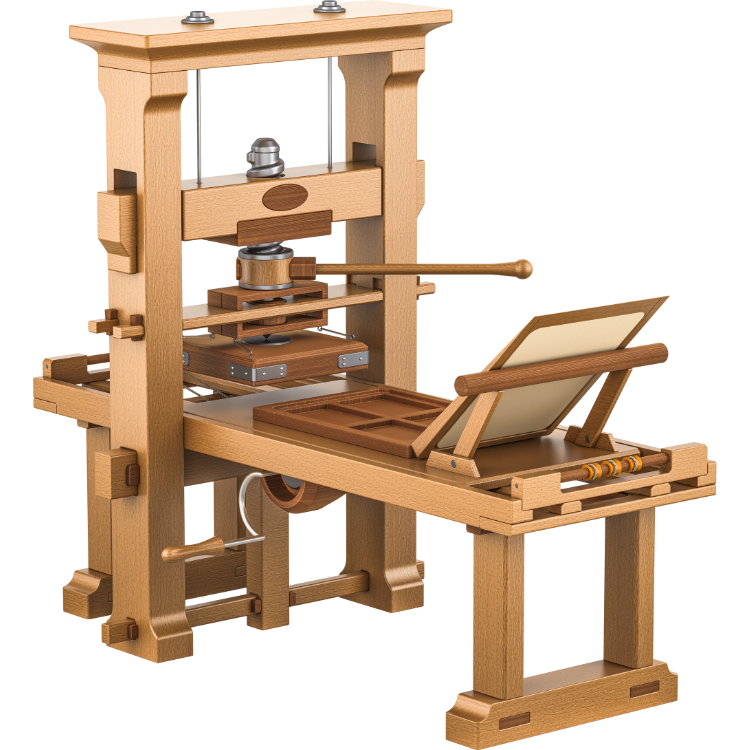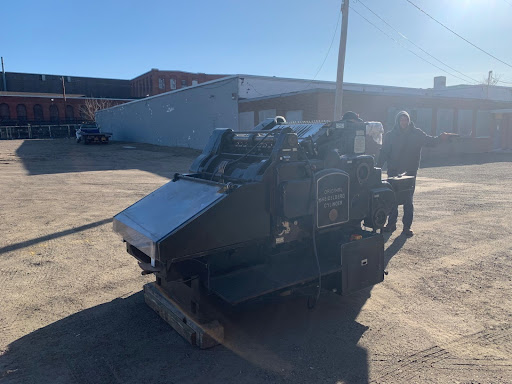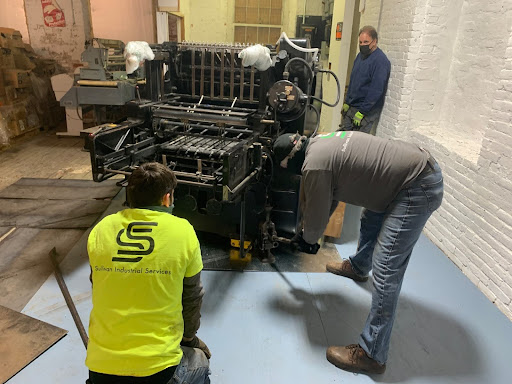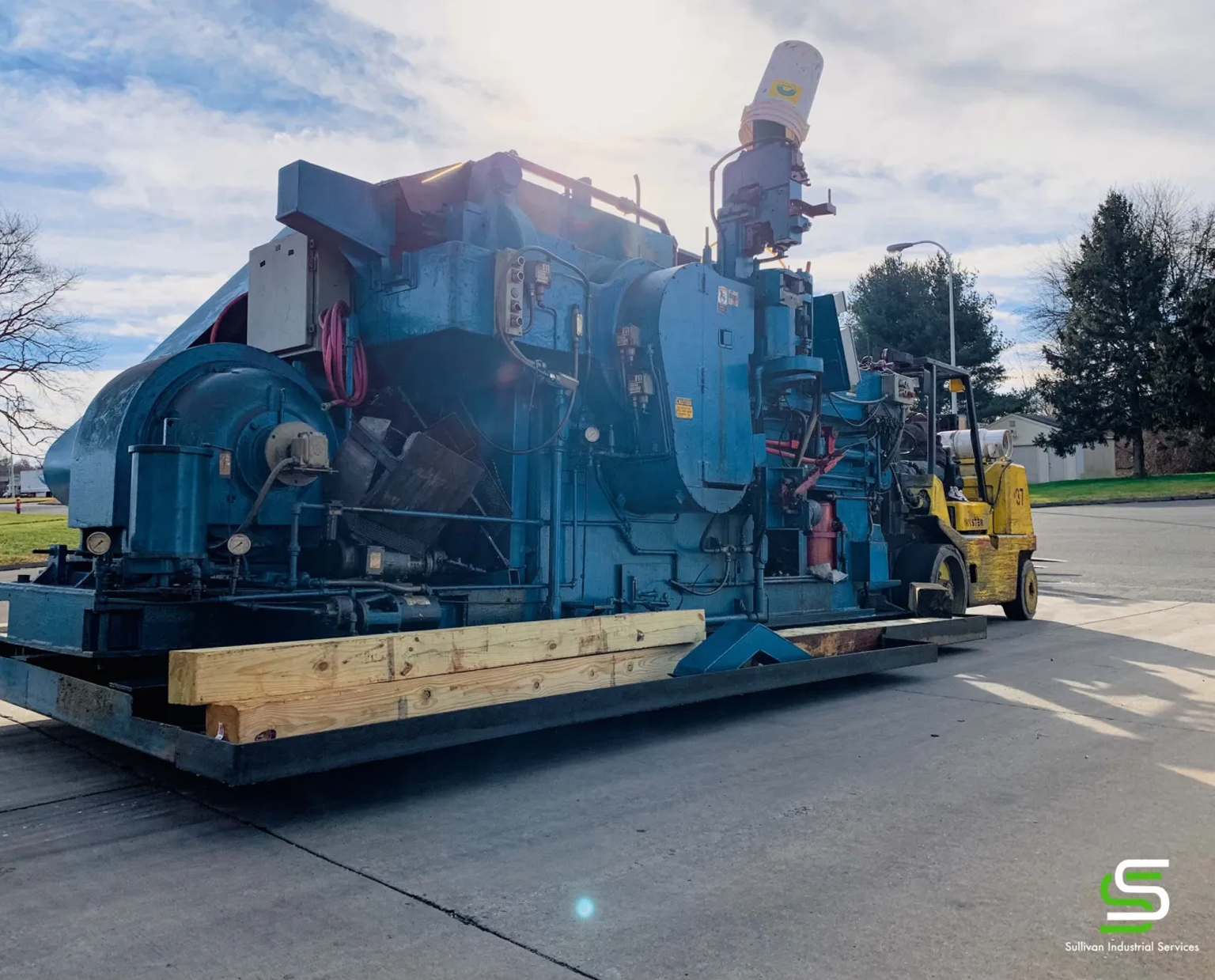Introduction
Moving large printing machines is a complex process that requires careful planning, specialized equipment, and skilled professionals. Whether relocating within the same facility or moving to a new location, the stakes are high. Mishandling these machines can lead to significant downtime, costly repairs, or even the complete loss of expensive equipment. This guide will walk you through the key considerations, steps, and best practices for safely and efficiently moving printing machines.
Contact Sullivan Industrial Services when you need to move a Printing Machine!

Why Careful Planning is Crucial
The importance of meticulous planning must be balanced when relocating printing machines. These machines are often large, heavy, and delicate, making them particularly susceptible to damage if improperly handled. Additionally, printing machines are integral to the production process, and any downtime can lead to significant losses in productivity and revenue. Proper planning helps to minimize these risks by ensuring that all aspects of the move are considered and executed efficiently.

1. Protecting Your Investment
Printing machines are significant investments for any business. Depending on their size, functionality, and technology, they can cost tens of thousands to millions of dollars. Moving such equipment without proper planning can result in damage that may void warranties, incur costly repairs, or necessitate the purchase of a new machine altogether.
2. Minimizing Downtime
In the printing industry, time is money. Any downtime during relocation can disrupt production schedules, delay orders, and negatively impact customer satisfaction. A well-planned move minimizes the time your machines are out of operation, ensuring your business can resume production as quickly as possible.
3. Ensuring Safety
The sheer size and weight of printing machines make them challenging to move. With proper planning, worker injury and damage to the facility are safe. Planning the move in detail, including how the machine will be lifted, transported, and reinstalled, is essential for ensuring the safety of everyone involved.
Steps for Moving Printing Machines
Moving printing machines involves several critical steps, each of which must be executed precisely. Below is a step-by-step guide to help you through the process.
1. Pre-Move Assessment
The first step in moving a printing machine is to assess the machine and facility thoroughly. This includes:
- Measuring the Machine: Accurately measure the dimensions and weight of the machine to determine the best way to move it. Ensure the machine will fit through doorways, elevators, and any other spaces it needs to pass through during the move.
- Assessing the Facility: Examine the layout of both the current and new locations. Identify potential obstacles that could complicate the move, such as narrow hallways, low ceilings, or tight corners.
- Identifying Special Requirements: Determine if the machine has any special requirements, such as climate control, that must be addressed during the move.
2. Assembling the Right Team
Relocating printing machines is not a task for just anyone. It requires a team of professionals with experience in moving heavy industrial equipment. Your team should include:
- Project Manager: Someone to oversee the entire move and coordinate between different teams.
- Machine Movers: Skilled workers who specialize in moving heavy machinery.
- Technicians: Experts familiar with the specific printing machines being moved to assist with disassembly, reassembly, and recalibration.
3. Disassembling the Machine
In many cases, it will be necessary to partially or fully disassemble the printing machine to move it safely. This process should only be carried out by qualified technicians who understand the machine’s components and can ensure that everything is reassembled correctly. Key points to consider during disassembly include:
- Labeling Components: Clearly label all parts and components to avoid confusion during reassembly.
- Documentation: Take detailed notes and photographs during disassembly to guide the reassembly process.
- Packing Parts Safely: Use appropriate packing materials to protect delicate parts from damage during transit.
4. Transporting the Machine
Once the machine has been disassembled and packed, the next step is transporting it to its new location. This step involves:
- Choosing the Right Equipment: Depending on the size and weight of the machine, you may need specialized equipment such as cranes, forklifts, or custom-built pallets to transport it safely.
- Securing the Load: Ensure the machine is securely fastened during transport to prevent any shifting or movement that could cause damage.
- Route Planning: Plan the route carefully to avoid any obstacles or hazards that could delay the move or damage the machine.
5. Reassembly and Installation
After the machine has arrived at its new location, the final step is reassembling and reinstalling it. The same technicians who handled the disassembly should carry out this process. Important considerations include:
- Ensuring Proper Alignment: To function correctly, printing machines must be precisely aligned during reassembly.
- Testing the Machine: Before resuming total production, test the machine to ensure that all components are working correctly and that no issues result from the move.
- Recalibration: Some printing machines may require recalibration after being moved to ensure they continue producing high-quality prints.

Common Challenges and How to Overcome Them
Moving printing machines presents several challenges that must be addressed to ensure a successful relocation. Here are some common issues and tips on how to overcome them.
1. Space Constraints
Limited space can make it difficult to maneuver large printing machines. To overcome this challenge:
- Plan the Route: Measure doorways, hallways, and other spaces in advance to ensure the machine can pass through without issue.
- Use Specialized Equipment: You may need specialized lifting equipment to navigate tight spaces.
2. Machine Sensitivity
Printing machines are often sensitive to movement, temperature changes, and vibrations. To protect your machine:
- Use Shock Absorbers: Consider using shock absorbers during transport to minimize vibrations.
- Maintain Climate Control: Use climate-controlled transport and storage options if the machine is sensitive to temperature or humidity.
3. Reassembly Issues
Reassembling the machine correctly is critical to its operation. To avoid problems:
- Hire Experts: Ensure that experienced technicians handle the disassembly and reassembly.
- Double-Check Everything: Double-check all connections and components before powering up the machine.

Plant Relocation and Reorganization Guide
For one reason or another, you may find it more beneficial to relocate your plant. An endeavor easier said than done. There is a lot that goes into relocating and reorganizing a plant or shop. You have to consider your employees, equipment, budget, productivity, etc.
List of Common Printing Machines
Here are some common types of large industrial printing machines that are frequently used:
- Offset Printing Machines: Widely used for high-volume printing jobs, mainly producing books, newspapers, and magazines.
- Digital Printing Machines: Suitable for short-run printing, offering flexibility and quick turnaround times.
- Flexographic Printing Machines: These are commonly used for printing on non-porous substrates such as plastics and are ideal for packaging materials.
- Gravure Printing Machines: Known for high-quality image reproduction, typically used for printing magazines, labels, and packaging.
- Screen Printing Machines: Used for printing on various materials, including textiles, ceramics, and glass.
Commercial Printing Machines Across CT & the North East
Sullivan Industrial Services is warehoused in Milford, CT with a second location in Bloomfield, CT, and serves small and large businesses throughout Connecticut and the North East including but not limited to:

Conclusion
Moving printing machines is a complex but manageable process that requires proper preparation and expertise. Following the steps outlined in this guide and working with experienced professionals, you can ensure your machines are relocated safely and efficiently, minimizing downtime and protecting your investment. Whether moving a single machine or an entire print shop, careful planning with a machine moving expert is the key to a successful move.
Recent Comments